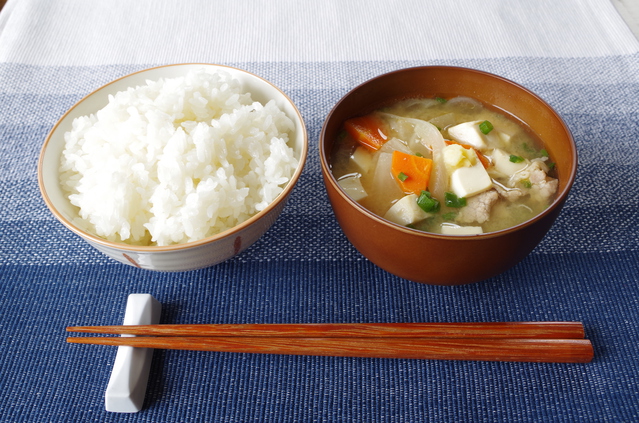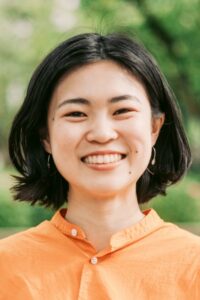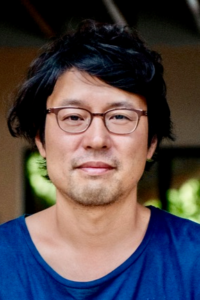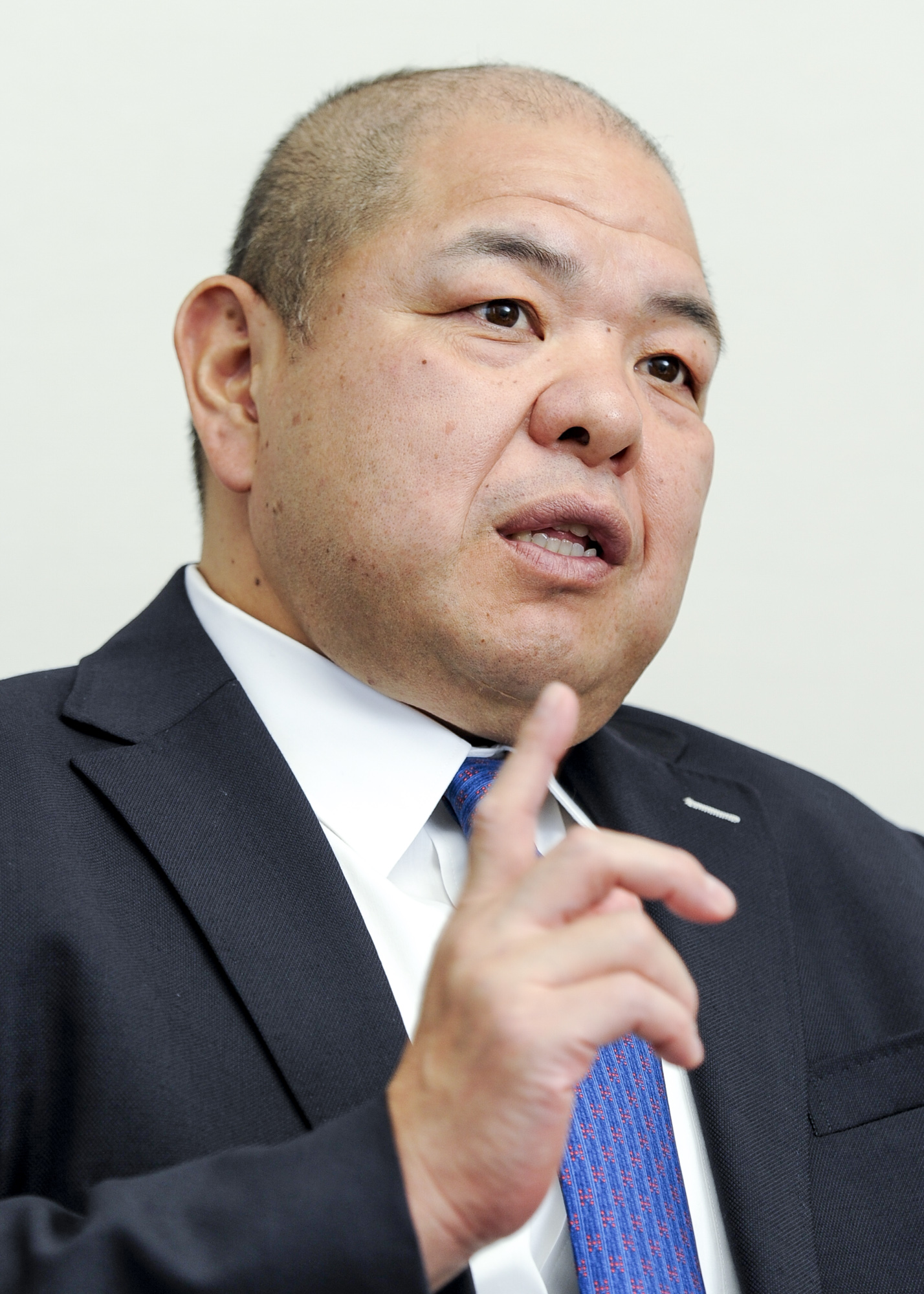Welcome to the free and deep world of home cooking

“The ichiju-issai (one soup, one dish) style is a place to “return to,” like a base or home from which you can go anywhere, and if you get lost, you can just come back. Especially for those who are new to cooking, I think the ichiju-issai style is clear, and it’s good that you can clearly see what you need to do.”—says Yamaguchi Yuka.
Yamaguchi Yuka (Home Cook) and Miura Tetsuya (Professor at Aoyama Gakuin University)
To make the impression bigger than the trouble
Yamaguchi Yuka: Mr. Miura, in your book Jisuisha ni Narutame no 26-shu (26 weeks to become a home cook [those who willingly cook for themselves]) (Asahi Press), you repeatedly write about the “charm of flavor.” I think the saying that we “savor the aroma as we eat” is really true. First of all, Mr. Miura, you’re not an expert in cooking, are you? Why did you decide to write a book on home cooking?
Miura Tetsuya: I have always loved cookbooks, and in my mid-twenties I became particularly obsessed with the works of Mr. Marumoto Yoshio (writer, cooking expert, 1934–2008). He was an even more eccentric writer who forced fundamentalists to rethink home cooking from the ground up. Since then, I have read books by other authors with enthusiasm. Reading them made me feel that “I had changed.” Also, my specialty is film criticism and research, and I’ve always thought that there’s something about cooking that can be related to movies. The point is “flavor.” Flavor is the smell combined with the taste. Smell is known to carry an enormous amount of information. In a sense, it reflects the world outside the kitchen. For example, ayu sweetfish (Plecoglossus altivelis) in summer has a unique watermelon-like aroma. The smell comes from the rock moss in the river that feeds ayu, so when we eat ayu in summer, the smell makes us think of clear streams. Or the bright scent of seasonal vegetables will remind you of scenes unique to that season, and herbs and spices will take your imagination to a foreign land. I feel that I have enjoyed cooking in the same way that I enjoy watching movies. I wanted to convey what that means in this book.
Yamaguchi: You also wrote that in order to be successful in home cooking, it is necessary to keep in mind “impressive > troublesome.” I think all chefs think about what they can do to overcome the “troublesome” barrier of cooking. However, when I look at chefs in their 70s and 80s, I sometimes get the feeling that cooking is something “they should do.” There are inevitable generational differences, and that’s not a bad thing, but values change. In short, you can live without home cooking these days. In my case, I believe that my role is to convey the meaning and joy of cooking. That’s why I felt that Mr. Miura and I had something in common in our awareness of the issues surrounding home cooking. I was surprised at how the output could change so much depending on the writer.
Miura: Nowadays, eating out and nakashoku (ready-to-eat meals [buying prepared food and eating it at home or at work]) are becoming more common, and cooking is becoming a chore that you don’t have to do yourself: you wrote in your book Jibun no tameni Ryori wo Tsukuru—Jisui kara hajimaru ‘kea’ no hanashi (Cooking for yourself—A story of ‘care’ that begins with home cooking) (Shobunsha). I thought that was right. So the question is, why do we cook food we don’t have to? In the old standard home cooking books, we were taught that “we cook because we’re women,” and in the specialized books read by professionals, the answer was “we learn to cook because it’s our job.”
Modern introductory books, however, must explain from the beginning “why we cook.” That is the fun of an introductory book. Because the author’s attitude toward cooking, and even his or her outlook on life and philosophy, goes beyond the technical theory. Ms. Yamaguchi, I found your book to be a very unique and fascinating introductory book in this regard.
Something different from convenience store food or eating out
Yamaguchi: One of the things that made me nod my head so much when I read your book was the episode called “my mother’s oden (stewed ingredients).” When Mr. Miura was in middle school, your father said about your mother’s homemade oden, “The oden from the convenience store 7-Eleven tastes better!” At that time, all you could say was, “No, Mom’s oden tastes better!” But, now you say that you clearly understand that your mother’s oden is precious because it has a flavor that cannot be replaced.
Miura: That’s right. Convenience store oden is a standard product, so it is consistent and tastes good. But at home, you should go in a different direction and aim for a unique, or a one-of-a-kind oden. If you cook your favorite ingredients in your favorite dashi (broth), the flavor will be the same, even if it’s not a standard product. It’s worth the effort to make it.
Yamaguchi: Especially since the end of the coronavirus pandemic, I often have men in their 50s and 60s in the cooking classes I teach. There are two main reasons for this. One is that they’ve been eating out all their lives, and even though they’re only in their early 60s, doctors have told them that their “vascular age is in the 80s,” and that their arteriosclerosis will get worse “if they don’t cook at home.” So they had no choice but to come to the cooking class. The other pattern is that people retire and their income decreases, and if they continue to eat out like they used to, they won’t have enough money.
In any case, these people have continued to eat out, and it has become the norm, and they are already forgetting the taste of home. The average restaurant rating is high. If the food is not good, the restaurant will go out of business, and as you said, Mr. Miura, if the taste of the food is not consistent, they themselves will be in trouble. On the other hand, when it comes to home cooking, it’s natural for things to fluctuate, and your skills and intuition change from day to day, and it also depends on the ingredients you get. There are a lot of people who see this as a negative, but in fact the real pleasure of home cooking lies in this uncertainty.
From “rock and roll” to “care”?
Miura: Ms. Yamaguchi, the biggest feature of your book is that you give lessons on a case-by-case basis, listening to actual stories from people who for some reason cannot or do not want to cook. There’s a breadth and gentleness and specificity that my books don’t have at all. It feels like I can reach a sore spot. In Ms. Yamaguchi’s book, together with psychiatrist Mr. Hoshino Gainen, you carefully unravel the “problems” of six people, making full use of the open-dialogue method. I thought it was really groundbreaking that the introduction to cooking became a “practice of care.” But even though they were advocating “care,” I felt they had a “rock ’n’ roll” spirit.
Yamaguchi: It’s a little rebellion against the culinary industry (laughs).
Miura: Right. I thought it was really cool and rock ‘n’ roll how you stood up to the world’s old wisdom about cooking, especially the imposition that you should do this because you are a woman and that you should decide what to do for yourself. Ms. Yamaguchi, in a conversation with a client [one of the six], you mentioned making char siu (barbecued pork) using a recipe by Ms. Takayama Naomi [a cook and writer].
Yamaguchi: Ms. Takayama is my favorite cook.
Miura: I can understand that feeling (laughs). Ms. Takayama is also someone with a rock-hard attitude, pioneering a flexible and cool unique style that does not fit the image of a good wife and mother as a homemaker. “Care” and “rock” seem to be polar opposites, but I think they have something in common at the core. In a sense, what used to be “rock” has become “care.” Don’t ignore the “difficulties of life” or “problems” and don’t adapt easily. In the case of “rock,” it’s straight rebellion, but in “care,” while retaining a sense of rebellion, the focus is on “recreating a sustainable way of life.” That’s why it seems that the “rock story of cooks” that started with Ms. Takayama has flowed into your book.
For example, you have clearly stated that you are not very good at eating yesterday’s leftovers. That is a bold statement for a cook. If you wanted to lower the bar for home cooking, you could just pander to your readers and be as nice as you want. But you don’t.
Yamaguchi: I think the great thing about home cooking is that you can eat whatever you want. I don’t like the feeling of “yesterday’s me trying to feed today’s me.”
Miura: I think that’s also a phrase that’s hard to say (laughs).
Yamaguchi: I try to say that I don’t like what I don’t like, but at the same time I feel that it’s extremely difficult to do that in today’s society. But I want to say what I want to say, and I don’t eat what I don’t want to eat, and I want to live that way.
Miura: You also say that when it comes to commercially prepared food, “If I don’t like the seasoning, I don’t have the option of holding back and eating it.” In my case, I eat the prepared food I buy at the depa-chika (underground food section of a department store, gourmet food hall), even if it tastes bad. Maybe it’s my anthropological interest that makes me do this, but it’s also interesting to eat while thinking about who made it and for what purpose.
Yamaguchi: I had atopic dermatitis when I was little, so I couldn’t eat oily foods, dairy products, or meat. So I was torn between “wanting to eat” and “not being able to eat,” and having to carefully distinguish what I couldn’t eat made my tongue sensitive. As you cook with this sensitive tongue every day, you will develop the flavors you like best.
The things I couldn’t eat included junk food in general and many dishes on restaurant menus, so I continued to feel alienated by the feeling that “the restaurants of the world were not available to me.” On the other hand, there are some foods that can only be eaten at home. For example, it is miso soup on the second day after it is made. You can’t taste this deliciousness anywhere else.
Miura: So if it’s miso soup, you don’t mind if “yesterday’s me” comes and feeds you?
Yamaguchi: As I love miso soup (laughs). I feel like I have different tolerances depending on the type of food, but it’s okay to eat soup at any time of the day. However, I don’t like pre-made side dishes. Participants in my cooking class have said, “I started doing meal prep, but I got tired of the taste,” “I’ve become reluctant to eat pre-prepared dishes because their taste deteriorates over time,” and “I couldn’t eat it all and threw it away.”
Miura: It would be good if the flavor changed in a positive way due to aging and so on. Something like nuka-zuke (vegetables pickled in fermented rice bran) or oden.
Yamaguchi: First of all, I think that making things in advance is possible because of family members. There are many single-person households in my cooking classes, and statistically speaking, single-person households are the most common family type, accounting for about 40% of all households in Japan. I think that in such a household, you probably won’t be able to eat all the food [even if you make it in advance]. Of course, there are some people who are fine with eating the same thing every day, but find it more difficult to make something different every day, so prepared meals may be suitable for those people. In any case, there is no one thing that can be recommended for everyone, and each person has to find out what works for him or her.
Between kosupa (cost performance) and commitment to cooking
Miura: In relation to what we’re talking about now, it’s often said that home cooking is poor kosupa (cost performance) when you live alone. Also, when talking about home cooking, I feel that every year there is a growing tendency to emphasize the pros and cons of kosupa and taipa (time performance, a Japanese-English expression that conveys the degree of effectiveness and satisfaction with the time spent). I think there are two kinds of home cooking: “home cooking as a means” and “home cooking as an end.” The former is, for example, for nutritional intake and saving money, and in this case it would be effective to emphasize kosupa and taipa. In such a situation, “Bazurecipe” by cooking expert Mr. Ryuji (a popular cook who presents recipes that are super easy to make, yet delicious) is in demand, and there are many people who have been saved by it.
On the other hand, home cooking as a purpose is simply home cooking to please oneself. In this case, the longer the cooking time, the better, and in a book by Ms. Tatsumi Yoshiko, a cooking expert born in 1924, it is written that the time required to make soup is “6 hours.” That means enjoying happiness for 6 hours. I too have days when I am short on time and days when I cook for pleasure, “cooking for a purpose.” I think it’s good to find the right balance between the two.
Yamaguchi: It’s good to have both, and I’d like to have something in between. When I look at the cookbook sections in bookstores these days, I get the impression that they are divided into two extremes: those who want to master kosupa and taipa, and those who are particular about so-called “polite living.” When I see books on the same shelf that are at opposite ends of the spectrum, I always wonder, “Isn’t there a book that’s a little more in the middle, that’s just right?” But recently, Ms. Ariga Kaoru, a soup creator, and Ms. Hasegawa Akari, who is in her 20s and mainly active on X (formerly Twitter), have made suggestions that hit just the right spot. I have the impression that the number of such cooks is growing.
Personally, I like to come up with recipes that are delicious and easy to make when I’m busy, but that also have a purpose. On the other hand, sometimes I think the recipe itself is ultimately unnecessary. For example, at this time of year [early spring], if you cook nanohana (rapeseed) nicely and sprinkle it with soy sauce, it’s already delicious. What you should focus on is cooking it to your liking. It’s fun to imagine things like, “I feel a little sick to my stomach today, so I think I’ll cook it until it’s soft.” Or, on the other hand, “I think it would taste better if it was chewy, with the flavor of nanohana remaining.” That’s what I want to convey first.
Miura: The boiling time of nanohana depends on one’s preference.
Style of ichiju-issai (one soup, one dish)
Yamaguchi: Even if it’s the same nanohana, it might be something you bought today or three days ago. Or, depending on whether it was in the refrigerator or left at room temperature, the amount of water will change, and the size of the pot you boil it in will also change how the heat passes through. Because it varies with conditions, everything in the recipe is just a guide, but it doesn’t come across. In my cooking classes, I often say, “Don’t think of cooking as difficult. It’s just housework, like cleaning and laundry. This is because people tend to think that cooking is the only housework that is particularly difficult.
Many people get nervous about cooking because they think too much about things like will it look good, will it be nutritious, will it be economical, will my family like it, and so on. But when you vacuum, you don’t get nervous (laughs).
Miura: Cooking should be free, but I also feel that many people think about it in terms of points deducted. For people of my mother’s generation, for example, the finished product prepared by the instructor on NHK’s “Today’s Cuisine” was given a score of 100, and based on that, they would score their own dishes at 70 or 80 points. If you do it all the time, cooking becomes very confining and boring. Cooking for yourself, friends, and family is a very relaxed and easy way. The ichiju-issai (one soup, one dish) style[1] proposed by Mr. Doi Yoshiharu [culinary expert, food producer] was a groundbreaking concept that popularized this very idea. The idea is that rice plus freely prepared miso soup is enough.
Yamaguchi: I lived in the ichiju-issai style for five to six years from the time I started living alone until I got married. Looking back on my Instagram, which I started when I was 18, I was uploading photos of ichiju-issai style dishes more than 10 years ago when I was a university student.
Miura: Did you practice ichiju-issai style before Mr. Doi?
Yamaguchi: I wouldn’t say that even under torture (laughs). I was the only one who ate it, and I didn’t have to make much, so I ended up with ichiju-issai style. But I tried to find beauty in it and enjoy it by thinking, “What kind of dish should I make today?” Sometimes I make rice and miso soup with many ingredients, as Mr. Doi suggests, and sometimes I make pancakes and soup, and even now I think the basic format of ichiju-issai style is fine. It’s the same when I eat alone and when I eat with my husband. However, because of my job, I want to make a lot of things for practice, so I often end up with ichiju-nisai (one bowl, two dishes).
Mr. Miura, what do you think of the ichiju-issai style?
Miura: If I were to follow Mr. Doi’s ichiju-issai style, I might die of boredom (laughs).
Since I had my child, I can’t eat out as much as I’d like, so I think I’m looking for stimulation and variety in home cooking. My favorite book by Mr. Doi is Ichijuissai-de Yoi to Itaru Made (To the point where ‘one soup, one dish’ is enough), which can be read as a kind of confession, and the twists and turns he went through to get to the point where he threw away his earthly desires and realized that “ichiju-issai style is enough” are very interesting. During the bubble economy era in the late 1980s, he apparently drove a sports car to his training place. During the time when Japan was rich, he thoroughly explored delicious food, and in the end he was enlightened. Personally, I wonder if we [those of a different generation than Mr. Doi’s] can suddenly throw away our earthly desires. Of course, the purpose of Mr. Doi’s book is to create an unshakable pattern and return to it to maintain physical and mental health, so I can understand that very well…
Yamaguchi: The ichiju-issai style is a place to “return to,” like a base or home from which you can go anywhere, and if you get lost, you can just come back. Especially for those who are new to cooking, I think the ichiju-issai style is clear, and it’s good that you can clearly see what you need to do.
What cooking can change
Miura: Earlier we talked about how cookbooks are polarized into kosupa and taipa and careful living, but I personally like books that have a higher bar. That’s exactly what Mr. Marumoto, whom I mentioned at the beginning, starts with: “First prepare a bonito shaver” [meaning that you first need to shave off the bonito flakes to make the basic dashi for cooking]. I think that if we keep lowering the bar unnecessarily, the world will become a worse place. In fact, I’ve received feedback that my books are “high hurdles.” It actually mentions things like filleting the fish yourself, and before that, finding a fishmonger who sells fresh fish.
Yamaguchi: I’m glad you wrote your book. Home cooking is all about freedom.
Miura: Perhaps the term “26 weeks” in the title of my book might be misleading to some people. Some people might prefer to think of it as “26 months” or “26 years.” But I wanted to show the prospect that “even if you can’t do it right away, you’ll have more fun when you can. If you look around, you’ll find a good fishmonger. Even if you usually shop at the supermarket, I’d like you to take a look at your local fishmonger.
I also believe that home cooking will decline unless the necessary foundations for home cooking are established and the direction for home cooking is set throughout the city and region. For example, the slogan “farm to table” may end up being just an image or information consumption like LOHAS. However, it is still possible to procure food in a more practical way, between personal relationships in the local community, and I wanted to show the kind of happiness that can be gained from this.
Yamaguchi: I think there’s a lot of content in the world today that pretends to be kind and supportive of others, such as “It’s a lot of work, isn’t it? Something simple will do,” but is actually not kind. I think cooks, including myself, tend to be kind because we don’t want to be disliked. As long as those who learn to cook accept this false kindness, there will be no growth. Maybe I should say it’s like a cram school teacher who only asks easy questions.
Miura: Ms. Yamaguchi, in your book, you emphasize that “work and relationships can sometimes not go well with your own efforts,” but “home cooking allows you to do what you want as much as you want, within the limits of your finances and time.” I feel the same way. The phrase “muscles never betray you” became popular in NHK’s exercise program “Minna de Kinniku Taiso” (Muscle Exercises for Everyone), and home cooking never betrays you either. There is always a return, and for me, the happiness of that return is very great.
I lived in a regional city until high school, so I have a strong longing for the outside where I lived. Cooking is the same as reading books and watching movies, and the fun of absorbing the unknown is endless, and I think the more you do it, the more you change. Everyone has their own pace, and it’s okay to be slow, so I think you just have to find your own pace. In any case, cooking certainly has the power to change people, and that is why my book is, so to speak, an “encouragement for transformation.”
The joy of being an experienced person
Yamaguchi: Mr. Miura, you write in your book that the most important thing when using a knife is to “trust that you’ll get used to it eventually,” and I agree. No one can cut ingredients well the first time they use a knife. But since you’re starting from there, there’s no way to avoid getting better.
Miura: When you cook for yourself, the way you taste food changes in surprising ways. For example, when watching a baseball game, people with baseball experience and people without baseball experience enjoy it in different ways. When a pitcher throws a ball to the batter’s inside corner at some point in an inning, an experienced baseball player knows what his intentions are and how much nerve it takes to throw that ball. It’s the same with cooking; you naturally come to understand the ingenuity that goes into it.
Yamaguchi: If you have experience cooking for yourself, you also become better at praising food.
Miura: On the other hand, if you don’t cook for yourself, your way of praising food is bound to be vague. I’m sure there are some men in their 50s and 60s who attend your classes and are surprised to realize how much effort their wives have put into cooking for years. Being aware of this will definitely help their marriage. Also, being able to enjoy cooking from the perspective of someone who has experience with it makes eating out twice as much fun.
Yamaguchi: “This dish is delicious when I add that ingredient!” That’s sometimes the case.
Miura: That’s right. There’s another very important thing. To use the baseball analogy again, whether it’s amateur baseball or professional baseball, I think it’s the same in that it’s fun to play. Once you become a player and hit the ball with a bat, that joy and pleasure comes to everyone equally. It’s the same with cooking, and there’s no proportionality between how good you are at cooking and how happy you are.
Yamaguchi: That’s so true. No matter how much I say, “It doesn’t matter whether you’re good or bad,” it’s hard to get people to understand, but I’ll keep saying it.
Moderated by Sudo Hikaru
[1] As modern eating habits revolve around eating out, culinary expert Yoshiharu Doi proposed the “one soup, one dish” style, which is sufficient for simple meals at home. This is a simpler version of the Japanese cooking style called “Ichuju-sansai” (one soup, three dishes). https://www.japanpolicyforum.jp/culture/pt201401301406073568.html
Translated from “Jiyu de Okubukaki Jisui no Sekai-e Yokoso (Welcome to the free and deep world of home cooking),” Chuokoron, May 2024, pp. 158–167 (Courtesy of Chuo Koron Shinsha) [June 2024]
Keywords
- Yamaguchi Yuka
- Miura Tetsuya
- Aoyama Gakuin University
- home cooking
- Jisuisha ni Narutame no 26-shu
- 26 weeks to become a home cook
- charm of flavor
- Marumoto Yoshio
- restaurants
- convenience stores
- ready-to-eat meals
- depa-chika
- Jibun no tameni Ryori wo Tsukuru
- oden
- dashi
- miso soup
- Doi Yoshiharu
- ichiju-issai
- one soup, one dish
- Hoshino Gainen
- Takayama Naomi
- cost performance
- time performance
- self-care
- Bazurecipe
- Tatsumi Yoshiko
- Ariga Kaoru
- Hasegawa Akari






